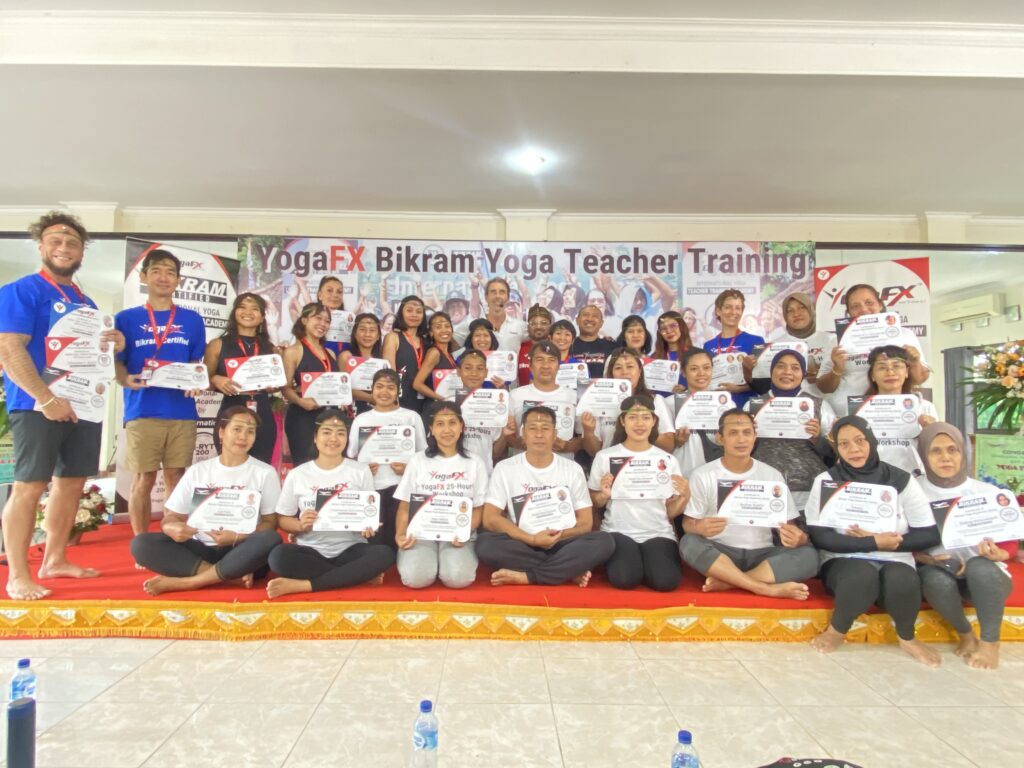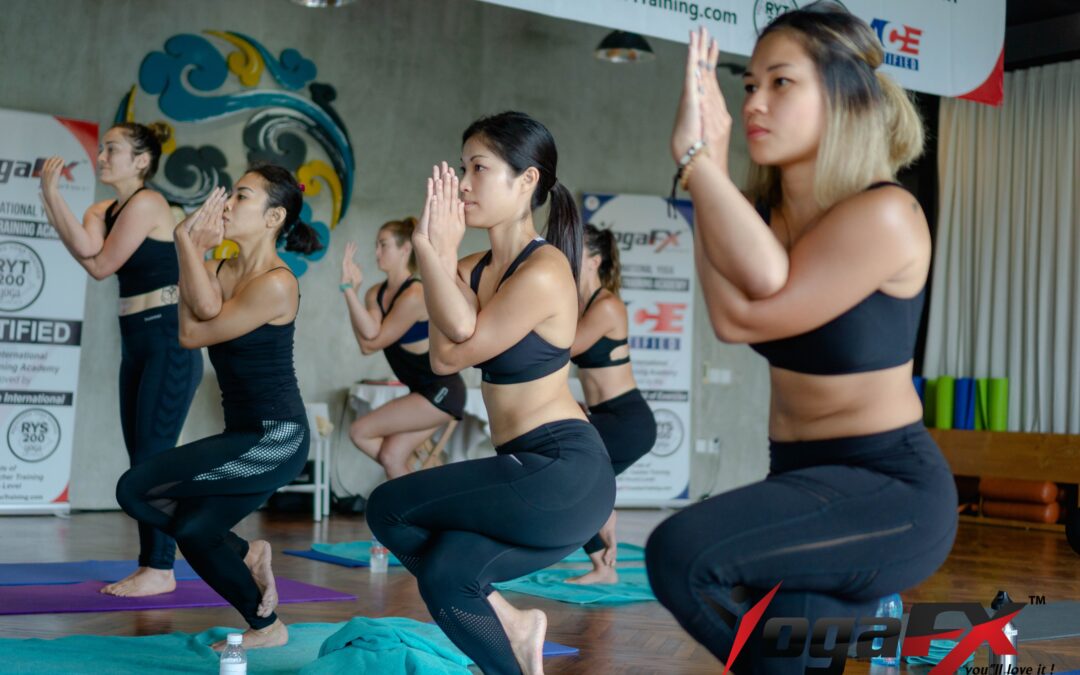In the modern age of technology and connectivity, the world of yoga has embraced the digital realm, offering aspiring yogis the opportunity to become certified instructors through online yoga instructor training. Online yoga instructor training programs provide a flexible and comprehensive approach to learning, enabling individuals to embark on a journey of personal growth, professional development, and sharing the gift of yoga with others.
This article explores the transformative power of virtual education in the realm of yoga, with a focus on the keywords: hot yoga, 26 and 2 yoga, bikram yoga, hot yoga teacher training, 26 and 2 yoga teacher training, online bikram yoga, hot yoga teacher training online, bikram yoga teacher training, Mr. Ian YogaFX, YogaFX, Yoga Alliance certified, ACE, and Bikram Hot YogaFX. Join us as we delve into the world of online yoga instructor training, examining the benefits and possibilities that arise from this innovative and accessible mode of education.

Understanding Online Yoga Instructor Training
Online yoga instructor training brings together the best of both worlds: the ancient wisdom of yoga and the convenience of modern technology. Through virtual platforms, aspiring yoga instructors can access comprehensive training programs that cover a wide range of yoga styles, including hot yoga, 26 and 2 yoga (commonly known as Bikram yoga), and more. These programs offer an in-depth exploration of yoga philosophy, anatomy and physiology, teaching methodologies, sequencing, and the integration of asanas (poses), pranayama (breathing techniques), and meditation. The interactive nature of online training allows for real-time instruction, guidance, and feedback, creating an immersive learning experience.
Advantages of Online Yoga Instructor Training
1. Flexibility and convenience of virtual training:
Online yoga instructor training provides the flexibility to learn at your own pace and from any location. You can access the training materials and participate in live sessions according to your schedule, eliminating the need for travel or adherence to a rigid timetable.
2. Access to a diverse range of experienced instructors and styles:
Online training programs often feature a lineup of highly qualified instructors from various yoga backgrounds. This allows you to learn from experts in the field of hot yoga, 26 and 2 yoga, Bikram yoga, and more, gaining insights and perspectives from a diverse range of teaching styles.
3. Cost-effectiveness compared to traditional in-person training:
Online yoga instructor training is often more affordable compared to in-person training programs. Without the expenses associated with travel, accommodation, and facility rental, online training provides a cost-effective option for aspiring instructors.
4. Opportunity to develop strong foundational knowledge and teaching skills:
Online training programs follow comprehensive curricula that cover all aspects of yoga instruction. You will develop a solid foundation in yoga philosophy, anatomy, teaching methodologies, and sequencing, equipping you with the necessary skills to confidently lead classes.
5. Integration of technology and online resources to enhance the learning experience:
Online yoga instructor training takes advantage of technology to offer interactive learning experiences. Through video lectures, live streaming sessions, discussion forums, and multimedia resources, you can deepen your understanding and engage with the material in a dynamic and engaging manner.
“It’s easy enough to pray when you’re in distress but continuing to pray even when your crisis has passed is like a sealing process”
Components of an Online Yoga Instructor Training Program
A comprehensive online yoga instructor training program typically includes the following components:
1. Yoga philosophy, history, and ethics:
Dive into the rich philosophical traditions of yoga, exploring the ancient texts, teachings, and ethical guidelines that guide the practice.
2. Anatomy and physiology for yoga practitioners:
Gain a deeper understanding of the human body and its relation to yoga through the study of anatomy, physiology, and biomechanics.
3. Teaching methodologies and effective communication skills:
Learn the art of effective teaching, including class sequencing, cueing, and creating a safe and inclusive environment for students.
4. Practical aspects of sequencing and class management:
Develop the skills to create well-rounded and balanced yoga sequences that cater to different levels and needs of students.
5. Integration of asanas, pranayama, and meditation techniques:
Explore a wide range of yoga poses, breathing exercises, and meditation techniques, understanding their benefits and how to incorporate them into your classes.

Navigating the Online Learning Environment
To make the most of your online yoga instructor training, consider the following:
1. Establish a dedicated study space and routine:
Create a space that is conducive to learning, free from distractions. Set aside dedicated time each day or week to engage with the training material and practice.
2. Utilize online platforms for interactive learning and engagement:
Take advantage of the interactive features offered by the online training platform. Participate in live sessions, ask questions, and engage in discussions with instructors and fellow trainees.
3. Seek support and guidance from instructors and peers:
Online training programs often provide mentorship and support. Take advantage of this by seeking clarification, feedback, and guidance from instructors and connecting with fellow trainees for additional support and collaboration.
4. Make the most of online resources and supplementary materials:
Online training programs typically provide a wealth of resources, including videos, readings, and practice assignments. Engage with these materials to deepen your understanding and enhance your learning experience.
Personal Growth and Professional Development
Online yoga instructor training offers opportunities for personal growth and professional development:
1. Cultivate a deep personal practice and self-awareness:
As you engage with the training material and practices, you will deepen your own personal practice. This journey of self-discovery and self-awareness forms the foundation for effective teaching and guidance.
2. Develop leadership and teaching skills:
Through interactive sessions and assignments, you will develop leadership qualities and teaching skills. These include effective communication, adapting to different student needs, and creating a supportive and empowering environment.
3. Enhance communication and adaptability as an instructor:
Online training requires effective communication skills to connect with students virtually. By honing your communication skills, you will be better equipped to guide students through verbal cues, demonstrations, and adjustments.
4. Foster a sense of community and collaboration with fellow trainees:
Although online, training programs often foster a sense of community among participants. Engage with fellow trainees, share experiences, and support each other’s learning journeys. Collaboration and networking can continue beyond the training program, providing a supportive community of like-minded individuals.
Accreditation and Certification
When considering online yoga instructor training programs, it is essential to prioritize Yoga Alliance certification. The Yoga Alliance is a globally recognized organization that sets industry standards for yoga teacher training. Choosing a Yoga Alliance-certified program ensures that you receive high-quality education and certification, which can enhance your credibility as a yoga instructor.
Choosing the Right Online Yoga Instructor Training Program
To select the most suitable online yoga instructor training program for you, consider the following:
1. Research reputable online training providers:
Conduct thorough research to identify reputable training providers that offer comprehensive online programs. Look for organizations or platforms that have a track record of delivering high-quality training and have positive reviews from past participants.
2. Evaluate the curriculum, credentials, and reviews of training programs:
Review the curriculum to ensure it covers all the essential components of yoga instruction. Evaluate the credentials and expertise of the instructors involved in the program. Read reviews and testimonials from past participants to gain insights into their experiences and the effectiveness of the training.
3. Consider personal interests, teaching styles, and specialty areas:
Choose a program that aligns with your interests, teaching style preferences, and any specific areas of yoga you wish to specialize in. Different programs may have varying focuses, so selecting one that resonates with your goals will enhance your learning experience.
4. Assess the level of support, mentorship, and community offered by the program:
Consider the level of support provided by the program, including access to instructors, mentorship opportunities, and a supportive community of fellow trainees. A strong support system can greatly enhance your learning journey and provide ongoing guidance and inspiration.

Conclusion
Online yoga instructor training offers a flexible and accessible pathway to becoming a certified yoga instructor. Through virtual platforms, you can embark on a transformative journey of personal and professional growth, guided by experienced instructors and supported by a vibrant online community. As you explore the world of online yoga instructor training, consider the Bikram yoga teacher training offered by Mr. Ian YogaFX.
This Yoga Alliance-certified program, endorsed by ACE (American Council on Exercise), provides a comprehensive curriculum and a supportive learning environment for aspiring Bikram yoga teachers. Embrace the opportunities provided by online education, empower yourself as a yoga instructor, and embark on a fulfilling career sharing the transformative power of yoga with others.






